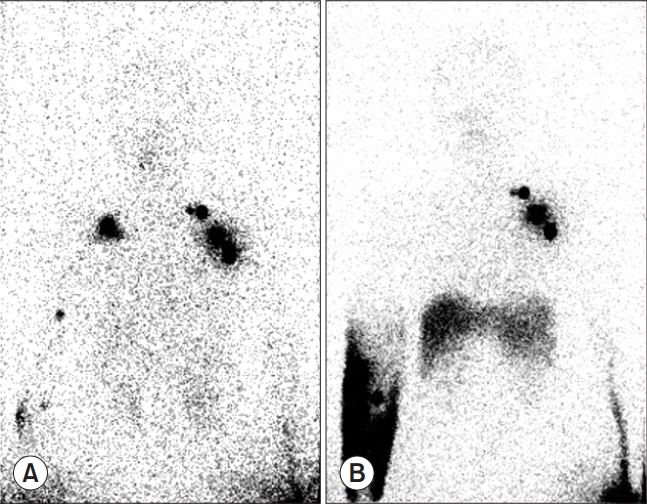Ann Rehabil Med.
2020 Dec;44(6):510-511. 10.5535/arm.20059.
Delayed Lymphedema due to Activated Axillary Lymph Node Dysfunction in a Patient With Breast Cancer
- Affiliations
-
- 1Department of Physical Medicine and Rehabilitation, Yeungnam University College of Medicine, Daegu, Korea
- KMID: 2510818
- DOI: http://doi.org/10.5535/arm.20059
Figure
Reference
-
1. Chen YW, Tsai HJ, Hung HC, Tsauo JY. Reliability study of measurements for lymphedema in breast cancer patients. Am J Phys Med Rehabil. 2008; 87:33–8.
Article2. McDuff SG, Mina AI, Brunelle CL, Salama L, Warren LE, Abouegylah M, et al. Timing of lymphedema after treatment for breast cancer: when are patients most at risk? Int J Radiat Oncol Biol Phys. 2019; 103:62–70.
Article3. Avraham T, Yan A, Zampell JC, Daluvoy SV, Haimovitz-Friedman A, Cordeiro AP, et al. Radiation therapy causes loss of dermal lymphatic vessels and interferes with lymphatic function by TGF-beta1-mediated tissue fibrosis. Am J Physiol Cell Physiol. 2010; 299:C589–605.
- Full Text Links
- Actions
-
Cited
- CITED
-
- Close
- Share
- Similar articles
-
- Rapid Lymphedema Progression in Breast Cancer Patient with Previous Forearm Fracture
- Effects of Education Program for Combined Management of Lymphedema with regard to Breast Cancer Patients with Axillary Lymph Node Dissection: A Quasi-Experimental Study
- Prevention of Breast Cancer-Related Lymphedema Using the Lymphatic Microsurgical Preventive Healing Approach: A Case Report
- Improvement of Upper Extremity Lymphedema after Delayed Breast Reconstruction with an Extended Latissimus Dorsi Myocutaneous Flap
- The Axillary Arch of Langer (Axillopectoral Muscle): A Case Report


